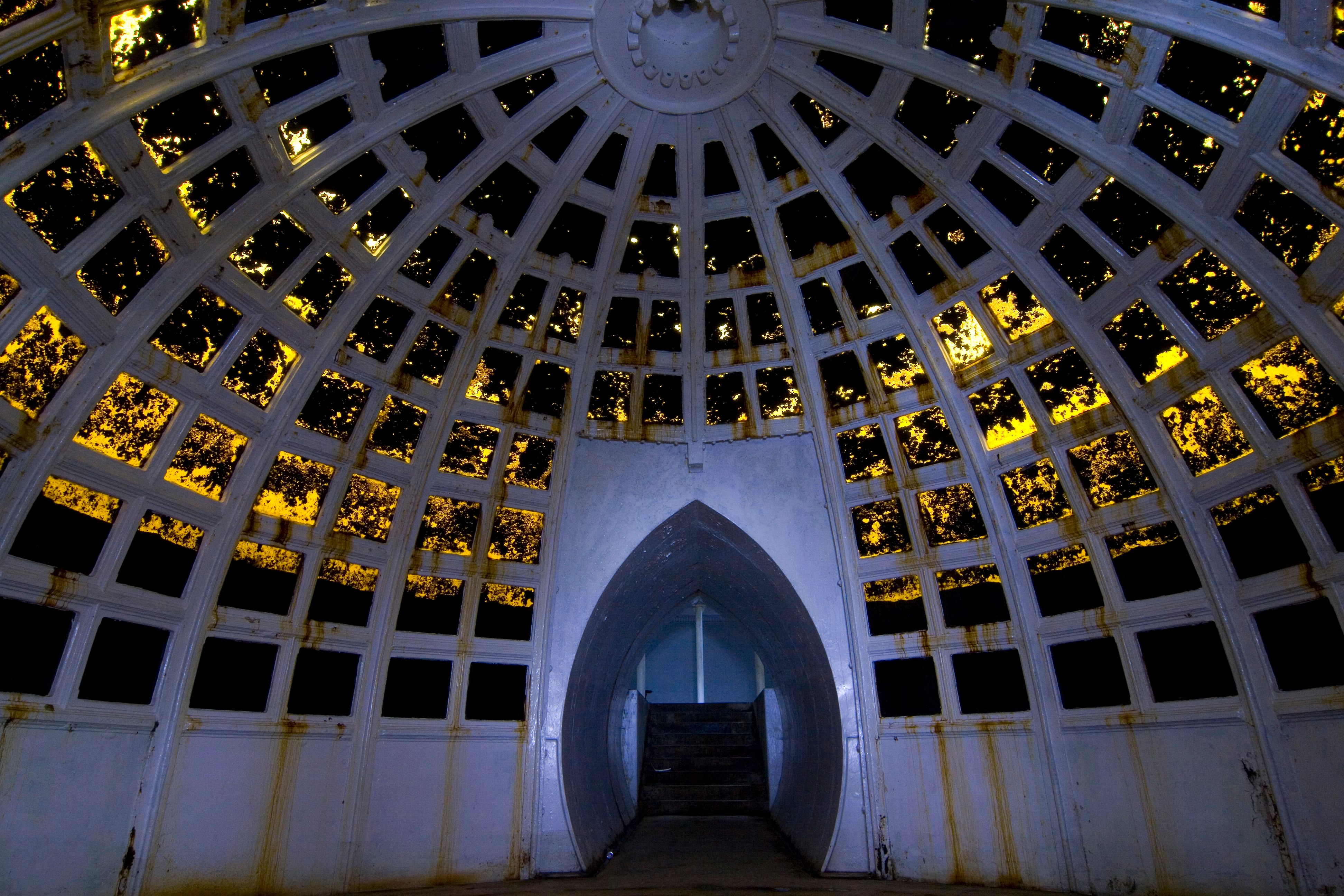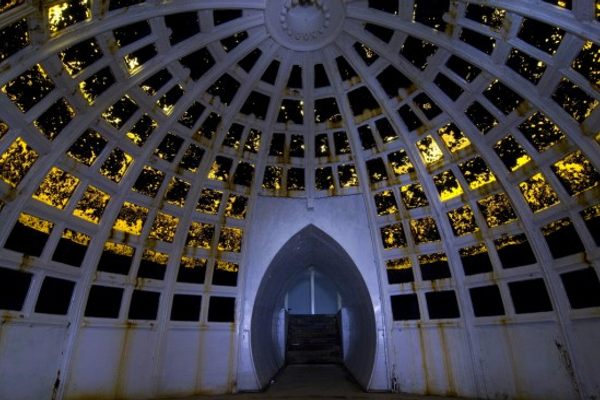100 Wonders: The Underwater Ballroom
The abandoned room beneath a lake was built by extravagant Victorian criminal Whitaker Wright.
Beneath an artificial lake in Surrey, England is an underwater ballroom created by a Victorian swindler.
British financier Whitaker Wright was not a man to do things in half measures. He lived big, he stole big, and when the time came, he exited the planet in a grand theatrical style.
During the 1880s, Wright made a fortune by promoting silver-mining companies in America. None of the companies made money for the investors, though he himself did quite well. You might recognize a certain similarity with members of the modern finance industry.
Wright returned to England, promoting foreign mining companies on the London market. Now a rich man, he worked to insert himself into Victorian English Society, which meant buying a very fast, very fancy yacht and building an extravagant manor. Wright ended up with a 32-room neo-Tudor mansion, equipped with theatre, observatory, velodrome, private hospital and stables accommodating more than 50 horses. He also had three artificial lakes dug. All 9,000 acres of his estate were exquisitely landscaped.
Perhaps the most notable and unique addition to his estate was what has come to be called the “Underwater Ballroom.” Built in one of the artificial lakes on the property, it was a hidden subterranean smoking room beneath a roof aquarium. Inside it one could look out and watch fish swim by as yellow light filtered in through the windows.
Above ground, the only clue to the ballroom’s existence was the statue of Neptune emerging from the lake as if presiding over his realm. When the ballroom was occupied, smoke from the financiers’ cigars reportedly piped out through Neptune’s mouth. It was spectacular—and like everything else on Whitaker Wright’s Lea Park estate, it was doomed.

With his network of corporations and a palatial estate complete with secret chambers, everything seemed to be going swimmingly for Whitaker Wright. But unbeknown to his investors, the millionaire magnate was slowly drowning.
In 1900, Wright floated a large, unwieldy bond issue for London’s Baker Street and Waterloo Railway. It was an expensive endeavor quite out of his usual comfort zone, and everything immediately went south. To keep investors from seeing him struggle, he began to issue himself a series of loans and shuttle them between his companies. Unable to keep things afloat, he fled, leaving his floundering investors in a panic.
Now considered a scourge and a scoundrel, Wright was retrieved and forced to stand trial. Needless to say, it didn’t go well. Convicted of fraud, he was sentenced to seven years in prison by the Royal Courts of Justice in 1904.
In a court anteroom, Whitaker Wright took his own life by swallowing a cyanide pill immediately after sentencing, and was found dead on the floor with a revolver in his pocket—assumed to serve as a backup in case the cyanide failed to finish the job.
After his death, Wright’s estate was auctioned off and sold to one Lord Pirrie, known today mostly for his role in the building of the Titanic. What use was made of the underwater smoking room is unknown.
In 1952, the mansion was completely destroyed in a fire. While new houses have been built, the landscaped park and the now ancient-looking ballroom still remain as the last remnants of Whitaker Wright’s grand life.

























Follow us on Twitter to get the latest on the world's hidden wonders.
Like us on Facebook to get the latest on the world's hidden wonders.
Follow us on Twitter Like us on Facebook